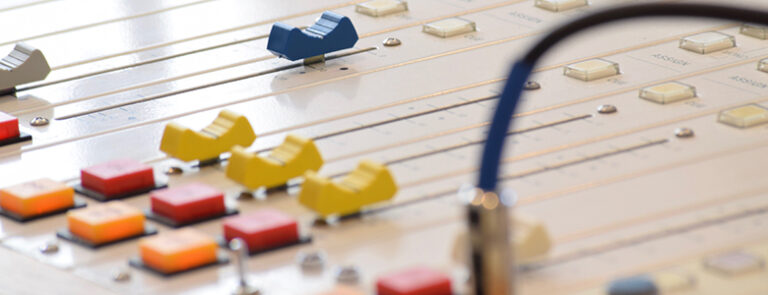
Should we be sound mixing with lo-fi portable devices in mind? Some say “a great mix is a great mix”, and they’re not wrong. However the question remains a constant source of discussion, amusement and point of frustration between friends and internet strangers alike – should we be mixing with lo-fi portable devices in mind?
It seems a 21st Century problem that isn’t going away anytime soon; we have our portable devices on hand with a connected convenience between us that means we can listen to our peers’ newest song or latest mix in seconds. Is it any wonder that we surreptitiously count the “real” ceremonial listening sessions as drastically less frequent events compared with our habits of multitasking and listening on the go?
Perhaps the better question is can we maneuver this current technological phase by using our phones as a reference point for how the mix translates on small mono speakers, helping us to reach that holy grail of a great mix in all forms.
To use our phones as our small mono reference speaker means balancing in ways that enhance the absent lows and highs with our busy mids, but that does not then overpower on better speakers.
One of the most universally agreed methods, to begin with, is the appropriate use of harmonic distortion, utilising the full range of naturally occurring harmonics, notably of the kick drum and bass which are often the first casualties of the mix. On the flip side of this, keeping the upper end in check from overcrowding of high frequencies from other instruments sitting in that upper range provides a much clearer and more even spread.

While mixing in mono is preferential to some, checking mono compatibility is a must. Phasing issues between left and right can mean even more loss of sound in a mix, so getting width and balance in mono is good practice. Checking compatibility audibly by doing an A/B of mono versus stereo via the DAW output is one relatively painless way, and there are several visual tools available on the market that can analyse the signal for us, helping to spot anything our ears may miss.
Running the mix through a high pass filter from the low mid-range is also regarded as a useful check for clarity in the mix, and can only help when taking into account the issues of translation. While these points are by no means extensive, they can go someway to helping our mixes sound better, and easily alleviate some of the loss encountered on most lo-fi devices.

While there have always been lo-fi speakers in days gone by, it does seem to have become more of an everyday consideration with modern solutions available – mastering software such as iZotope Ozone now incorporate a phone speaker pre-set on their output referencing features. Though the convenience of listening on our devices hasn’t run its course just yet, it doesn’t have to be a source of struggle and deliberation in the mixing and mastering process.
Article by SoundGirl: Michelle Sciarotta
Another great article by SoundGirls: Working in the Sound Industry: 5 Steps to Becoming Rich and Famous
Follow SoundGirls on Instagram, Twitter


The mission of SoundGirls.org is to inspire and empower the next generation of women in audio. Our mission is to create a supportive community for women in audio and music production, providing the tools, knowledge, and support to further their careers. SoundGirls.Org was formed in 2013 by veteran live sound engineers Karrie Keyes and Michelle Sabolchick Pettinato and operates under the Fiscal Sponsorship of The California Women’s Music Festival, a 501(c)3 non-profit organization. In 2012, Karrie and Michelle participated in the “Women of Professional Concert Sound” panel at the AES Conference in San Francisco. The panel was hosted by the Women’s Audio Mission (WAM) and moderated by WAM founder Terri Winston. Terri brought together five women working in live and broadcast audio. The groundbreaking panel (which also included Jeri Palumbo, Claudia Engelhart and Deanne Franklin), provided young women and men a glimpse into life on the road, tips and advice, and a Q & A with the panelists. More importantly though, was how incredibly powerful the experience was for the panelists. We had all been in the business for 20 years or more, yet most of us had never met before that day and within minutes we bonded like long-lost sisters. We were struck by how similar our experiences, work ethics, and passions were and wondered why our paths had never crossed and how our careers would have been different had we been there to support each other through the years. Each of us are strong on our own, but together we were even stronger and a powerful force. We were empowered. Each of us had been asked hundreds of times in our careers: Are there other women doing sound? How did you get into sound? How would a young woman go about getting into sound? Through creating SoundGirls.Org, we hope to establish a place for women working in professional audio to come for support and advice, to share our success and failures, our joys and frustrations, and for empowerment and inspiration.
Read Full Profile© 2021 TheatreArtLife. All rights reserved.

Thank you so much for reading, but you have now reached your free article limit for this month.
Our contributors are currently writing more articles for you to enjoy.
To keep reading, all you have to do is become a subscriber and then you can read unlimited articles anytime.
Your investment will help us continue to ignite connections across the globe in live entertainment and build this community for industry professionals.